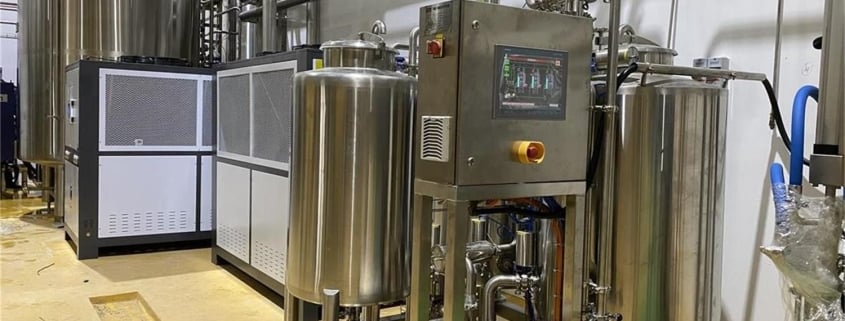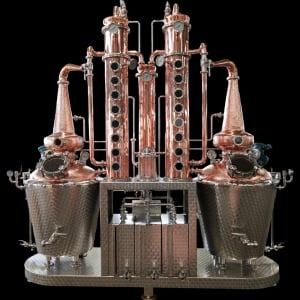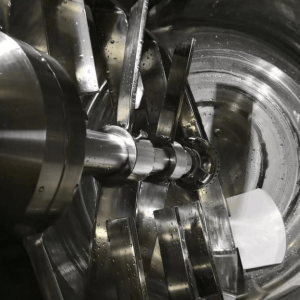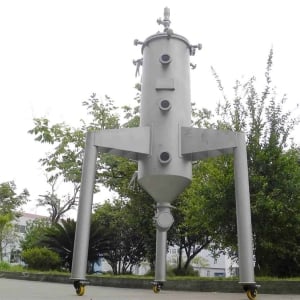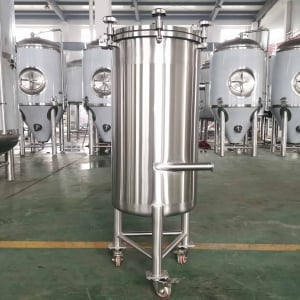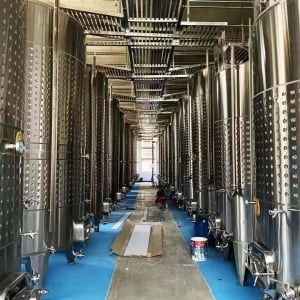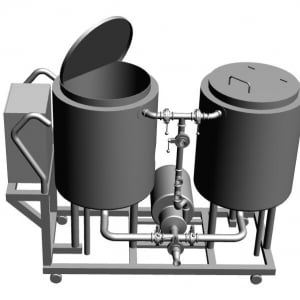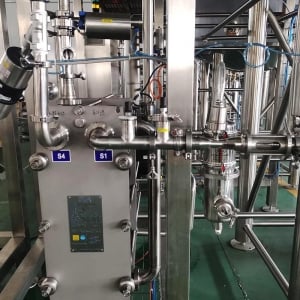Brewing Equipment Supplier: A Comprehensive Guide
Overview of Brewing Equipment Suppliers
The brewing industry is a dynamic and rapidly evolving sector, with homebrewing and commercial brewing both growing in popularity. Whether you’re a craft beer enthusiast looking to start brewing at home or a large-scale brewery expanding your production capacity, finding the right brewing equipment supplier is crucial. This guide provides an in-depth look into the world of brewing equipment suppliers, exploring everything from the types of equipment available to the factors to consider when choosing a supplier.
Understanding Brewing Equipment
Brewing equipment is the backbone of any brewing operation, whether at home or on a commercial scale. The equipment you choose can significantly impact the quality, consistency, and efficiency of your brewing process. In this section, we’ll discuss the key types of brewing equipment and their roles in the brewing process.

Types of Brewing Equipment
To brew beer, a variety of equipment is needed, each serving a specific purpose in the brewing process. Here’s an overview of the essential brewing equipment:
| Equipment Type | Description |
|---|---|
| Mash Tun | A vessel where the malt is mixed with hot water to extract fermentable sugars. |
| Boil Kettle | Used to boil the wort with hops, sterilizing the wort and extracting bitterness, flavor, and aroma from the hops. |
| Fermentation Tank | The vessel where the wort is stored during fermentation, allowing yeast to convert sugars into alcohol and carbon dioxide. |
| Bright Tank | Used to store beer after fermentation and before packaging, allowing for carbonation and clarification. |
| Heat Exchanger | Cools the boiled wort quickly before it is transferred to the fermentation tank, preventing contamination and promoting a healthy fermentation environment. |
| Brewhouse System | A complete system that includes mash tun, boil kettle, hot liquor tank, and other components for a full brewing process. |
| Grain Mill | Crushes malted barley and other grains to prepare them for mashing. |
| Pump | Used to transfer liquids, such as wort, water, and cleaning solutions, between different vessels during the brewing process. |
| Cleaning Equipment | Essential for maintaining hygiene, this includes CIP (Clean-In-Place) systems, hoses, brushes, and sanitizers. |
| Kegging/Bottling Line | Equipment for packaging beer into kegs, bottles, or cans, essential for commercial operations. |
The Brewing Process: From Grain to Glass
Brewing beer involves a series of steps that convert raw ingredients into the delicious beverage we all enjoy. Each step requires specific equipment and careful attention to detail. Here’s a breakdown of the brewing process:
- Milling the Grain: The process starts with milling the malted barley. The grain mill crushes the grains, breaking them down to prepare for mashing. The crushed grains, known as grist, are then ready for the next step.
- Mashing: The grist is mixed with hot water in the mash tun, allowing enzymes to break down the starches in the grain into fermentable sugars. The resulting liquid, known as wort, is separated from the grain husks.
- Boiling: The wort is transferred to the boil kettle, where it is boiled and hops are added. Boiling serves several purposes, including sterilizing the wort and extracting bitterness, flavor, and aroma from the hops.
- Cooling: After boiling, the wort is rapidly cooled using a heat exchanger to a temperature suitable for fermentation. This step is crucial to prevent contamination and ensure a successful fermentation.
- Fermentation: The cooled wort is transferred to a fermentation tank, where yeast is added. The yeast converts the sugars in the wort into alcohol and carbon dioxide, producing beer.
- Conditioning: The beer is transferred to a bright tank for conditioning. During this phase, the beer matures, flavors develop, and carbonation levels are adjusted.
- Packaging: Once conditioned, the beer is packaged in bottles, cans, or kegs using a packaging line. Proper packaging is vital to maintain beer quality during storage and distribution.
Choosing the Right Brewing Equipment Supplier
Selecting the right brewing equipment supplier is a critical decision that can significantly impact the success of your brewing operation. The supplier you choose should offer high-quality equipment, reliable support, and competitive pricing. Here are some factors to consider:
Factors to Consider When Choosing a Supplier
| Factor | Details |
|---|---|
| Quality of Equipment | Ensure the supplier offers durable, high-quality equipment that meets industry standards and can withstand the rigors of brewing. |
| Customer Support | A good supplier should offer ongoing support, including installation, training, and maintenance services. |
| Customization Options | The ability to customize equipment to fit your specific brewing needs is essential, particularly for commercial brewers with unique requirements. |
| Price and Value | While price is important, it should be balanced with the quality and features of the equipment. Consider the long-term value rather than just the upfront cost. |
| Reputation and Reviews | Research the supplier’s reputation in the industry. Look for customer reviews and testimonials to gauge their reliability and service quality. |
| Delivery and Installation | Ensure the supplier can deliver and install the equipment within your required timeframe, and that they provide clear instructions for setup. |
Brewing Equipment Supplier Comparison
| Supplier | Equipment Offered | Customization | Price Range | Customer Support | Reputation | Delivery |
|---|---|---|---|---|---|---|
| Supplier A | Full brewing systems, tanks | Yes | $$ – $$$ | 24/7 Support, Installation | Highly regarded | On-time delivery |
| Supplier B | Basic homebrew kits | Limited | $ – $$ | Online Support | Good for beginners | Fast shipping |
| Supplier C | Commercial-scale equipment | Extensive | $$$ – $$$$ | Dedicated Account Managers | Trusted by top breweries | Custom delivery options |
Installation, Operation, and Maintenance of Brewing Equipment
Proper installation, operation, and maintenance are crucial to the longevity and performance of brewing equipment. Neglecting these aspects can lead to inefficiencies, equipment failure, or even safety hazards. This section provides an overview of what to expect in these areas.
Installation and Setup
| Stage | Details |
|---|---|
| Pre-Installation Planning | Assess the space where the equipment will be installed. Ensure adequate space for operation, maintenance, and future expansion. |
| Delivery and Unpacking | Equipment should be inspected upon delivery to ensure all parts are present and undamaged. Follow supplier guidelines for unpacking and initial setup. |
| Connection to Utilities | Proper connection to electrical, water, and gas lines is essential. It’s advisable to hire professionals for this stage to ensure safety and compliance. |
| Initial Testing | Before full-scale operation, conduct initial testing to ensure all equipment is functioning correctly. Address any issues before beginning production. |
Operation
| Aspect | Details |
|---|---|
| Training | Proper training on operating the equipment is essential. Suppliers often offer training sessions or manuals to help. |
| Safety Protocols | Adhere to safety guidelines to prevent accidents. This includes wearing protective gear and understanding emergency shutdown procedures. |
| Process Optimization | Regularly review and adjust the brewing process to maximize efficiency and product quality. This might involve tweaking recipes or experimenting with different settings. |
Maintenance
| Maintenance Type | Details |
|---|---|
| Routine Cleaning | Regular cleaning is crucial to prevent contamination. Use appropriate cleaning agents and follow the supplier’s recommendations. |
| Scheduled Servicing | Adhere to the equipment’s maintenance schedule for servicing parts like pumps, seals, and heating elements. |
| Troubleshooting | Be prepared to troubleshoot common issues such as leaks, temperature inconsistencies, or mechanical failures. Keep a log of any problems and how they were resolved. |
How to Choose the Right Supplier for Your Brewing Needs
Choosing a supplier is not just about finding the cheapest option. It’s about finding a partner who will help you succeed in your brewing endeavors. Here’s how to choose the right supplier:
Evaluating Potential Suppliers
| Criteria | Details |
|---|---|
| Product Range | Look for suppliers who offer a wide range of products, from beginner kits to commercial systems. This indicates experience and a deep understanding of brewing needs. |
| Customization and Flexibility | Choose a supplier who can tailor their offerings to your specific requirements, whether it’s a small homebrew setup or a large commercial brewery. |
| Customer Service | Assess the level of customer service, including the availability of support, responsiveness to inquiries, and the provision of additional services like installation and maintenance. |
| Technical Expertise | A supplier with deep technical knowledge can be invaluable, offering advice on the best equipment for your needs and troubleshooting any issues that arise. |
Comparing Suppliers Based on Key Factors
| Supplier | Product Range | Customization Options | Customer Service | Technical Expertise | Pricing |
|---|---|---|---|---|---|
| Supplier X | Extensive | High | Excellent | Advanced | $$$ |
| Supplier Y | Moderate | Medium | Good | Intermediate | $$ |
| Supplier Z | Limited | Low | Fair | Basic | $ |
Advantages and Disadvantages of Different Brewing Equipment
Every brewing setup has its pros and cons. Depending on your needs, certain types of equipment may be more suitable than others. This section outlines the key advantages and disadvantages of various brewing equipment options.
Comparing Brewing Equipment
| Equipment Type | Advantages | Disadvantages |
|---|---|---|
| Electric Brewing Systems | Precise temperature control, easy to operate, good for indoor brewing. | Higher upfront cost, requires reliable electrical supply, potential for higher energy consumption. |
| Gas Brewing Systems | Fast heating, cost-effective for large batches, flexible use (indoors or outdoors). | Less precise temperature control, potential safety hazards, requires proper ventilation. |
| Commercial-Scale Systems | High capacity, efficient production, robust construction. | Very expensive, requires significant space, complex to operate, and maintain. |
| Homebrew Kits | Affordable, easy to use, good for beginners. | Limited capacity, may lack durability, not suitable for advanced brewing. |
Brewing Equipment Prices: What to Expect
Brewing equipment prices can vary widely depending on the scale, quality, and features of the equipment. Understanding these costs can help you budget appropriately and avoid unexpected expenses.
Brewing Equipment Price Ranges
| Equipment Type | Price Range (USD) | What’s Included |
|---|---|---|
| Basic Homebrew Kit | $100 – $500 | Includes fermenter, bottles, capper, hydrometer, siphon, and other essentials for brewing small batches. |
| Electric Brewing System | $1,000 – $5,000 | Includes electric kettle, mash tun, pump, and controller for automated brewing. |
| Gas Brewing System | $500 – $3,000 | Includes gas burner, boil kettle, mash tun, and basic accessories. |
| Commercial-Scale System | $50,000 – $500,000+ | Includes large-capacity mash tuns, boil kettles, fermenters, heat exchangers, pumps, and often a complete setup with installation. |
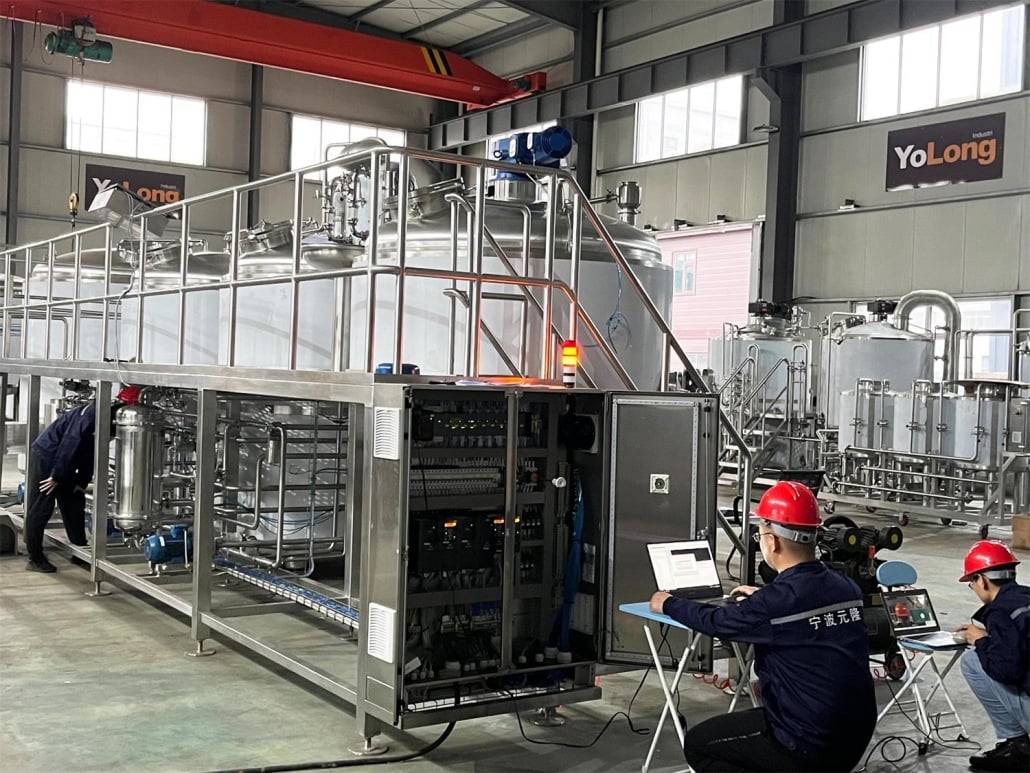
FAQs
| Question | Answer |
|---|---|
| What should I look for in a brewing equipment supplier? | Focus on quality, customization options, customer support, and the supplier’s reputation. Make sure they have experience in the brewing industry. |
| How much should I budget for commercial brewing equipment? | Depending on the scale, you should budget anywhere from $50,000 to over $500,000 for a full commercial brewing setup. |
| Is it better to buy a complete brewing system or individual components? | This depends on your needs. Complete systems are convenient and often more efficient, while individual components allow for more customization. |
| How often should brewing equipment be serviced? | Regular maintenance is essential. Schedule servicing based on the equipment manufacturer’s recommendations, usually every few months or after a certain number of brews. |
| Can I start a brewery with used equipment? | Yes, starting with used equipment can save costs, but ensure the equipment is in good condition and capable of meeting your brewing needs. |
Conclusion
Finding the right brewing equipment supplier is essential to ensuring the success of your brewing operations, whether you are just starting out or looking to expand. By considering factors such as quality, customer support, customization options, and pricing, you can select a supplier that meets your specific needs. Remember, the brewing equipment you choose will have a significant impact on your product’s quality and your overall brewing experience, so choose wisely.

